Products
-
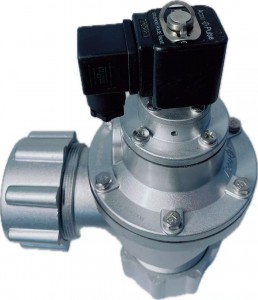
Significant Performance Advantages of DMF – ZM – 40 Pulse Valve
The DMF – ZM – 40 pulse valve is highly favored in industrial applications due to its series of remarkable performance advantages, which make it stand out among similar products.
From the perspective of sensitivity, the DMF – ZM – 40 pulse valve responds extremely quickly to the electrical signals of the pulse blower control instrument. As soon as the electrical signal is received, the moving core of the electromagnetichead can quickly move, opening the exhaust hole of the rear chamber, causing the diaphragm to rapidly move backward to achieve the blower action. The entire process is completed almost instantaneously. This high sensitivity ensures that the cleaning and blower actions can be carried out promptly and accurately, effectively avoiding the problem of insufficient dust removal due to delayed response, thereby ensuring the efficient operation of the dust collector.
In terms of exhaust volume, the DMF – ZM – 40 pulse valve has outstanding performance. Its design structure enables it to provide a large exhaust channel when in the open state, allowing compressed air to be rapidly and in large quantities ejected through the valve outlet. The powerful blower airflow can forcefully impact the dust on the surface of the filter bag, completely removing it, even the stubbornly adhered dust is difficult to resist. Compared with some similar products, it can complete the dust removal of the same area filter bag in a shorter time, greatly improving the dust removal efficiency and reducing the maintenance time and cost of the equipment.The working stability is also a major highlight of the DMF – ZM – 40 pulse valve. It is manufactured with high-quality materials, such as the diaphragm using imported nitrile rubber, which has good flexibility and wear resistance, capable of withstanding frequent opening and closing actions, ensuring that it will not crack or damage during long-term use. At the same time, its internal structure has been carefully designed, with a close and reasonable fit between each component, maintaining a stable working state under different working environments and pressure conditions. Whether in harsh environments with high temperature and high humidity, or under high pressure and high-frequency blower operation intensity, the DMF – ZM – 40 pulse valve can operate reliably, providing a strong guarantee for the continuity of industrial production.
In addition, the DMF – ZM – 40 pulse valve also has great convenience in installation, use, and maintenance. It has fixed nuts for installation at both the inlet and outlet ends, making the installation connection between the air box and the dust collector blower pipe simple and quick, effectively shortening the installation time. During use, its working principle is simple and easy to understand, and the operating state is easy to monitor and control. When maintenance is needed, due to its reasonable structure design, each component is easy to disassemble and replace, allowing maintenance personnel to quickly locate and solve problems, reducing the difficulty and downtime of equipment maintenance and improving the production efficiency of the enterprise.
-
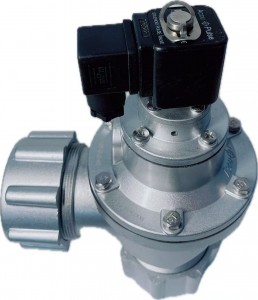
The wide range of applications for the DMF – ZM – 40 pulse valve
The DMF – ZM – 40 pulse valve, with its outstanding performance, has extensive and crucial applications in numerous industrial fields, becoming an important component for ensuring the production environment and equipment operation.
In the field of dust removal, especially in the pulse bag-type dust collector system, the DMF – ZM – 40 pulse valve is regarded as the core component. As the “switch” of the dust cleaning blow-off system’s compressed air, it is precisely controlled by the pulse blow-off controller’s output signal, and it performs dust cleaning by blowing on the filter bags row by row (section by section). In boiler dust collectors, it can promptly remove a large amount of dust generated during boiler operation, preventing dust accumulation from affecting the thermal exchange efficiency and safe operation of the boiler; in medium-frequency electric furnace dust collectors, in the presence of high-temperature and high-concentration dust environment, the DMF – ZM – 40 pulse valve can still work stably, ensuring the air quality in the electric furnace workshop and protecting the health of workers. Moreover, in various dust removal equipment such as casting-specific dust collectors, woodworking-specific dust collectors, and mining-specific dust collectors, its busy “presence” can be seen, creating a clean environment for industrial production.
In environmental protection waste gas treatment, the DMF – ZM – 40 pulse valve also plays an important role. For example, in plasma waste gas purification equipment and spray towers, it participates in the waste gas treatment process. By controlling the blow-off of compressed air, it assists the purification equipment in capturing and separating pollutants in the waste gas, improving the waste gas purification efficiency, and helping enterprises meet environmental protection emission standards and reducing pollution to the atmospheric environment.In some industrial production processes that require precise control of gas flow and pressure, the DMF – ZM – 40 pulse valve also performs well. For instance, in chemical production, certain reaction processes require precise control of the gas addition amount and time intervals. The DMF – ZM – 40 pulse valve can accurately open and close according to the set program, providing stable gas supply conditions for chemical reactions, ensuring the smooth progress of chemical production and the stability of product quality.
-
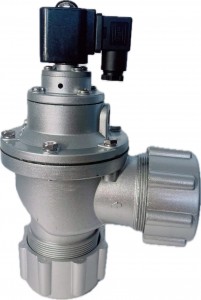
In-depth Analysis of the Working Principle of DMF – ZM – 40 Pulse Valve
In industrial dust removal systems, the DMF – ZM – 40 pulse valve plays a crucial role, and its efficient and stable operation relies on a unique and ingenious working principle.
From a structural perspective, the DMF – ZM – 40 pulse valve is mainly divided into two gas chambers by a diaphragm. When the entire system is connected to compressed air, the compressed air will slowly enter the rear gas chamber through the throttle hole. At this time, the pressure in the rear gas chamber gradually increases until it tightly presses the diaphragm assembly against the output port of the valve, thus putting the electromagnetic pulse valve in the initial “closed” state, like a meticulous guard, firmly controlling the flow of compressed air.
When the pulse blowing control instrument sends an electrical signal, this signal is like giving the pulse valve an “open” instruction. The electrical signal causes the armature of the electromagnetic pulse valve to move rapidly backward, thereby opening the exhaust hole of the rear gas chamber. The air in the rear gas chamber is rapidly expelled in a short period of time, and the pressure instantly drops. Under the action of the pressure difference, the diaphragm assembly moves backward, and the compressed air that was previously blocked rushes out through the valve output port at high speed. At this time, the electromagnetic pulse valve enters the “open” state, and the powerful blowing airflow cleanses the filter bag, blowing off the dust adhering to the surface of the filter bag, ensuring the efficient operation of the dust removal system.
When the electrical signal from the pulse blowing control instrument disappears, the armature of the electromagnetic pulse valve returns to its initial position under the action of the reset device, and the exhaust hole of the rear gas chamber closes. The rear gas chamber then begins to intake air through the throttle hole, and the pressure gradually rises. The diaphragm assembly re-contacts the output port of the valve again, and the electromagnetic pulse valve returns to the “closed” state, waiting for the next blowing command to arrive. This precise and efficient working mode enables the DMF – ZM – 40 pulse valve to operate stably in the dust removal and blowing system of the pulse bag dust collector, continuously contributing to the purification of industrial production environments.
-
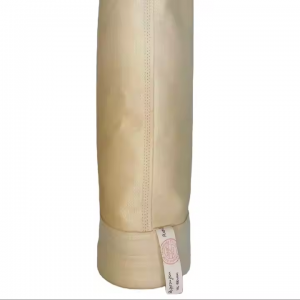
Application Fields of PPS Dust Filter Bags
Application Fields of PPS Dust Filter BagsDue to the excellent performance characteristics of PPS dust filter bags, they are widely used in many industries, playing a crucial role.Power Industry
- Coal-Fired Power Plants: The flue gas generated during coal combustion usually has a temperature range of 140 – 180°C and contains a large amount of acidic gases such as SO₂ and NOx, as well as dust. PPS dust filter bags can operate stably in such high-temperature and highly corrosive environments, effectively filtering dust and resisting the erosion of acidic gases. According to statistics, after a large coal-fired power plant adopted PPS filter bags, the dust emission concentration decreased from 50mg/m³ to below 10mg/m³, significantly improving environmental benefits, ensuring that the flue gas meets the emission standards, and meeting the increasingly stringent environmental protection requirements.
- Waste Incineration Power Generation: The flue gas generated by waste incineration has a complex composition, containing not only highly corrosive gases such as HCl and SO₂ but also pollutants like dioxins and heavy metals, with a large temperature fluctuation range (120 – 200°C). PPS filter bags, with their high-temperature resistance and chemical corrosion resistance, can efficiently intercept dust and pollutants while withstanding frequent temperature changes, ensuring the stable operation and environmental compliance of the waste incineration power generation system, and providing strong support for the sustainable development of the waste incineration power generation industry.
Steel Industry
In the steel production process, such as in blast furnace ironmaking, converter steelmaking, and other processes, a large amount of high-temperature dust and waste gas are generated. These waste gases contain a large number of dust particles and harmful gases such as CO and SO₂. PPS dust filter bags can efficiently remove dust particles in an environment with high temperature, high dust concentration, and corrosive gases, reduce the flue dust emission concentration, and minimize air pollution. At the same time, they protect production equipment, extend its service life, and improve production efficiency.Chemical Smelting Industry
In chemical production processes such as smelting, petrochemicals, and coking, the flue gas often contains high concentrations of acidic gases (such as sulfuric acid mist, hydrochloric acid gas), organic pollutants, and high-temperature dust. For example, in metallurgical processes such as copper and zinc smelting, PPS dust filter bags can effectively filter dust containing heavy metals and resist the corrosion of sulfides in the flue gas. In chemical production, many reaction processes generate corrosive waste gases. The chemical corrosion resistance of PPS filter bags enables them to adapt to these harsh working conditions, operate stably, and achieve efficient dust removal, providing reliable guarantee for environmentally friendly production in the chemical smelting industry.Building Materials and Cement Industry
The flue gas emitted from the kiln head and kiln tail of cement plants has a high temperature (150 – 200°C) and contains alkaline dust and a small amount of acidic gases. PPS filter bags can adapt to high-temperature environments and resist the abrasion of alkaline dust and the corrosion of acidic gases. In the cement production process, stable ventilation and efficient dust removal are crucial for ensuring product quality and production efficiency. PPS dust filter bags can efficiently filter dust, maintain stable ventilation during cement production, improve production efficiency, and meet environmental protection requirements, helping the building materials and cement industry achieve green production.Other Industries
In addition to the above main industries, PPS dust filter bags are also widely used in industries such as glass manufacturing, ceramic production, and biomass power generation. In the glass manufacturing process, the flue gas generated by high-temperature furnaces contains dust and some volatile substances, and PPS filter bags can effectively purify the flue gas. In the ceramic industry, a large amount of flue gas and dust generated during the firing process can also be treated by PPS dust filter bags. In biomass power generation, the flue gas contains many fine particles and some corrosive components. PPS filter bags can effectively remove particles and resist a certain degree of corrosion, ensuring the environmental protection of the biomass power generation process. -
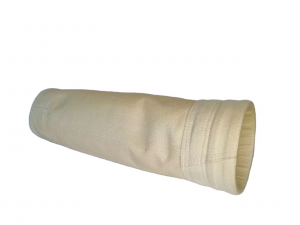
Manufacturing Process of PPS Dust Filter Bags
Fiber Selection and Pretreatment
The production of PPS dust filter bags begins with the selection of high-quality PPS fibers. These fibers usually need to be pretreated before use to remove impurities and adjust the surface properties of the fibers, ensuring better bonding during subsequent processing and improving the overall performance of the filter bags. Pretreatment methods include washing, drying, surface modification, etc.Needle FeltingThe pretreated PPS fibers are carded into a web and then needled by a needling machine. During the needling process, barbed needles repeatedly penetrate the fiber web, causing the fibers to entangle with each other, forming a needle felt with a certain thickness and strength. The needling process enables the fibers to interweave in three-dimensional space, increasing the dirt-holding capacity of the filter bags and improving the filtration accuracy. By controlling the needling density and depth, the structure and performance of the needle felt can be adjusted to meet the requirements of different working conditions.Surface TreatmentTo further enhance the performance of PPS dust filter bags, the needle felt is usually subjected to surface treatment. Common surface treatment methods include singeing, calendering, and film coating. Singeing treatment can remove the fluff on the surface of the filter bags, reducing dust adhesion and making dust removal easier. Calendering treatment rolls the surface of the filter bags under high temperature and pressure, making the surface smoother and improving dust release. Film coating involves covering the surface of the filter bags with a Polytetrafluoroethylene (PTFE) film. This film has a microporous structure, which can further improve the filtration accuracy, achieving efficient filtration of ultra-fine dust particles. Meanwhile, it can also enhance the water and oil resistance of the filter bags. -
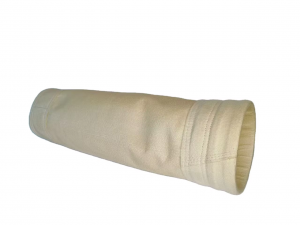
PPS Material Dust Filter Bags: Reliable Guardians of Industrial Environmental Protection
Dust pollution is a non-negligible issue in industrial production. It not only severely damages the environment but also endangers the health of workers and affects the normal operation of production equipment. To effectively address dust pollution, dust removal and filtration equipment have emerged. As the core component of such equipment, the performance of dust filter bags directly determines the effectiveness of dust removal. Among various materials for dust filter bags, Polyphenylene Sulfide (PPS) stands out with its excellent properties, becoming a reliable guardian in the field of industrial environmental protection.
Characteristics of PPS MaterialPPS is a high-performance special engineering plastic with a series of outstanding properties, making it highly suitable for manufacturing dust filter bags.High Temperature ResistancePPS material has a relatively high melting point, usually around 285°C, enabling PPS dust filter bags to operate stably in high-temperature environments. Generally, they can be used continuously at 190°C and withstand a maximum instantaneous temperature of 230°C. This excellent high-temperature resistance makes them perform exceptionally well in handling high-temperature flue gas. For instance, in high-temperature industrial scenarios such as coal-fired boilers, cement rotary kilns, and waste incinerators, PPS filter bags can effectively filter dust without deformation, aging, or damage due to high temperatures, ensuring the long-term stable operation of the dust removal system.Chemical Corrosion ResistancePPS exhibits strong resistance to acids, alkalis, salts, and most organic solvents. In industrial production, many flue gases contain various corrosive gases and chemical substances, such as sulfur dioxide (SO₂), nitrogen oxides (NOx) in the flue gas of coal-fired power plants, and sulfuric acid mist, hydrochloric acid gas in the flue gas of the chemical smelting industry. PPS dust filter bags can maintain their structural and performance stability in such complex and corrosive environments, effectively resisting the erosion of chemical substances. This significantly extends the service life of the filter bags and reduces equipment maintenance costs.Good Mechanical PropertiesPPS fibers have high strength and modulus, with mechanical properties similar to those of polyester fibers. This means that during the use of PPS dust filter bags, they can withstand significant pressure and friction, and are not prone to breakage or damage. In the process of pulse cleaning and other operations, filter bags need to withstand the impact and friction of airflow frequently. The high mechanical strength of PPS material ensures that the filter bags can withstand these tests and maintain good filtration performance.Flame RetardancyPPS is inherently a flame-retardant material, with a limiting oxygen index (LOI) ≥ 34, making it difficult to burn. In some industrial environments with fire risks, such as the waste incineration power generation industry, the flame retardancy of PPS dust filter bags is particularly important. They can effectively prevent the spread of fire in case of a fire, reducing the harm to equipment and personnel and ensuring production safety.High Filtration EfficiencyPPS dust filter bags are manufactured using advanced processes. The fiber structure is dense, and a three-dimensional structure formed by processes such as needling endows them with good porosity and air permeability. This structural feature enables the filter bags to effectively capture and intercept tiny dust particles. The filtration efficiency for dust particles larger than 0.1μm can reach over 99%, meeting strict environmental protection emission standards. They can efficiently remove dust particles from flue gas, significantly reducing the flue dust emission concentration and improving environmental quality. -
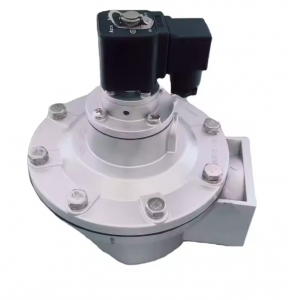
DMF-Z-50: The Vanguard of Dust Removal in Technological Innovation and Industry Practice
In the wave of pursuing high efficiency and environmental protection in the industrial dust removal field, DMF-Z-50 has become the top choice for numerous enterprises with its outstanding performance. From technological breakthroughs to practical applications, it is redefining the standards of industrial dust removal as an innovator.
I. In – depth Analysis of Core Technical ParametersThe core technical parameters of DMF-Z-50 are the foundation of its high efficiency. With a diameter of 50mm, this size design enables it to be compatible with the pipelines of various specifications of dust removal equipment, ensuring the efficient transmission of compressed air. The working pressure range is usually 0.4 – 0.8MPa. This wide pressure adaptation range allows DMF-Z-50 to maintain stable blowing even in low-pressure environments and achieve strong power output under high-pressure requirements.In terms of electrical performance, DMF-Z-50 supports multiple voltage specifications, commonly including DC24V, AC220V, etc., meeting the power supply needs of different industrial scenarios. Its response time is extremely short, only taking dozens of milliseconds. This means that after the dust removal system issues an instruction, it can complete the blowing action instantly, greatly improving the dust removal efficiency. In addition, the service life of this pulse valve can reach more than millions of times. Even under high-frequency usage conditions, it can still maintain stable performance.II. Common Faults and Efficient Troubleshooting SolutionsAlthough DMF-Z-50 has stable performance, faults may still occur after long-term use. One of the most common problems is that the pulse valve fails to open normally. This may be caused by a burned-out electromagnetic coil, a short circuit in the control circuit, or a blocked air path. When troubleshooting, first check the resistance value of the electromagnetic coil. If the resistance value is abnormal, the coil needs to be replaced. At the same time, carefully check whether there are any damages or poor contacts in the control circuit. For the air path, clean the impurities and accumulated water in the pipeline to ensure smooth air flow.Another common fault is air leakage, which is mostly caused by the aging of the diaphragm and the wear of the seals. The leakage position can be preliminarily determined by observing whether there are sounds and traces of gas leakage around the valve. Once the diaphragm or seals are found to be damaged, they should be replaced with original factory accessories in a timely manner to ensure the sealing performance. In addition, regularly conducting pressure tests and tightness inspections on the pulse valve can effectively prevent faults and extend the service life of the equipment.III. Typical Industry Application CasesIn the cement production industry, after a large-scale cement plant introduced DMF-Z-50 pulse valves for bag dust collectors, the dust removal efficiency increased significantly. Before the transformation, the blowing force of traditional pulse valves was insufficient, resulting in serious dust accumulation on the filter bags, and the dust removal efficiency could only be maintained at around 85%. After adopting DMF-Z-50, its powerful blowing ability enabled thorough cleaning of the filter bags, and the dust removal efficiency soared to over 99%, effectively reducing dust emissions and meeting environmental protection standards. At the same time, its long service life reduced the equipment maintenance frequency, saving more than 300,000 yuan in maintenance costs annually.In the steel smelting industry, the harsh environment with high temperature and high dust content poses a great challenge to the performance of pulse valves. A steel enterprise applied high-temperature-resistant DMF-Z-50 pulse valves in electric-bag composite dust collectors. Even in an environment with a temperature of over 200°C, they still operated stably. The precise air flow control of these pulse valves ensured the stable air flow in the electric field and filter bag areas of the dust collector, greatly improving the dust collection efficiency and helping the enterprise achieve green production.With its precise technical parameter design, reliable performance, and successful practices in various industries, DMF-Z-50 has become a core component in the industrial dust removal field. Whether in technological innovation or practical applications, it demonstrates strong competitiveness and provides a solid guarantee for the environmental protection upgrade of industrial production. With the continuous progress of technology, DMF-Z-50 is bound to play an even greater role in more fields. -
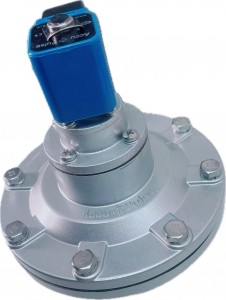
DMF-Z-50: Key Electromagnetic Control Component of Industrial Dust Collector
In numerous stages of industrial production, the control of dust pollution is of vital importance. The industrial dust collector, as the core equipment to solve this problem, requires the coordinated work of many precise components for its efficient operation. DMF-Z-50 is one of the key electromagnetic control components.
I. In-depth Analysis of Working Principle
The DMF-Z-50 pulse valve mainly relies on the magnetic field generated by the electromagnetic coil to precisely control the valve’s action, thereby achieving efficient on-off operation of the airflow. When the electromagnetic coil is energized, the instantaneous magnetic field will attract the valve core to move upward, and the originally closed air passage channel will immediately open. Compressed air can then flow smoothly through, providing necessary power support for the subsequent dust removal process. When the electromagnetic coil is de-energized, the valve core, under the strong elastic force of the spring, quickly moves downward, and the air passage channel is closed again. The entire process is seamless and extremely rapid.
From its internal structure, the diaphragm ingeniously divides the electromagnetic pulse valve into two gas chambers, the front and the rear. In the initial state, after the compressed air is connected, the compressed air will slowly enter the rear gas chamber through the carefully designed throttle hole. At this time, the pressure in the rear gas chamber rises rapidly, and the strong pressure tightly presses the diaphragm assembly against the output port of the valve, keeping the electromagnetic pulse valve in a “closed” state, ensuring that the gas does not leak. When the system equipment sends out a precise pulse signal, the armature of the electromagnetic pulse valve will quickly move backward, and the exhaust hole in the rear gas chamber opens instantly. The gas in the rear gas chamber is rapidly discharged in a very short time, and the pressure drops sharply. Due to the lack of support from the rear gas chamber pressure, the diaphragm assembly moves backward rapidly under the pressure of the front compressed air, allowing the compressed air to flow through the valve output port powerfully. At this time, the electromagnetic pulse valve is in the “open” state, efficiently completing the blowing task. When the pulse signal disappears, the armature of the electromagnetic pulse valve is quickly reset by the return spring, and the exhaust hole of the rear gas chamber closes. The pressure in the rear gas chamber begins to rise again, and the diaphragm assembly again closely adheres to the output port of the valve. The electromagnetic pulse valve returns to the “closed” state, preparing for the next blowing.
II. Widespread Application Areas
The DMF-Z-50 pulse valve holds a crucial position in the industrial dust collector system and is widely used in various bag-type dust collectors and electrostatic dust collectors, etc. In bag-type dust collectors, its main responsibility is to provide high-pressure pulse gas during the dust removal process. As industrial production continues, the filter bags will gradually accumulate a large amount of dust particles, which will seriously affect the ventilation effect and dust removal efficiency of the dust collector. At this time, the DMF-Z-50 pulse valve, according to the preset program, periodically sprays high-pressure pulse gas onto the filter bags. The powerful airflow can instantly blow off the dust particles on the filter bags, allowing them to regain their good filtering performance, thus ensuring that the dust collector is always in an efficient operating state and continuously purifies industrial waste gas.
In electrostatic dust collectors, the DMF-Z-50 pulse valve also plays an indispensable role. It can precisely control the airflow within the electrostatic dust collector, ensuring a stable and uniform airflow distribution in the electric field area. Stable airflow helps to improve the dust capture efficiency of the electrostatic dust collector, allowing the dust in the industrial waste gas to be more effectively adsorbed and collected, further enhancing the performance and stability of the entire dust removal system.
III. Outstanding Product Features
High efficiency and energy saving: The DMF-Z-50 pulse valve adopts advanced design concepts and cutting-edge technologies, ensuring strong blowing capacity while significantly improving energy utilization efficiency. It can quickly respond to the pulse signals sent by the system, precisely control the on-off and flow rate of the airflow, and avoid unnecessary waste of energy. In practical industrial applications, compared with traditional pulse valves, it can significantly reduce energy consumption and save a large amount of operating costs for enterprises.
High durability: This pulse valve is extremely meticulous in material selection, using high-quality materials for manufacturing. These materials have excellent corrosion resistance and wear resistance, and can operate stably and continuously in harsh industrial environments. Whether facing high temperatures, high humidity environments, or industrial exhaust gases containing corrosive gases, the DMF-Z-50 pulse valve can always maintain good performance, and its service life is much longer than similar products, greatly reducing the frequency of equipment maintenance and replacement, and providing a strong guarantee for the continuous production of enterprises.
Easy installation: Its structural design is simple and clear, and the installation and disassembly of each component are very simple. During the actual installation process, workers do not need complex tools and professional skills to complete the installation task quickly. This simple and convenient installation method not only saves installation time and labor costs, but also makes it easy to perform maintenance and replace parts of the equipment in the later maintenance and maintenance process, improving the maintenance efficiency of the equipment.VII. Precautions during use
Power matching is crucial: When using the DMF-Z-50 pulse valve, it is necessary to ensure that the connected power voltage is exactly the same as the rated voltage of the electromagnetic coil. If the power voltage is too high, it may cause the electromagnetic coil to overheat and burn out; while if the power voltage is too low, the pulse valve will not work properly, affecting the performance of the entire dust removal system. Therefore, during the installation and debugging of the equipment, it is necessary to carefully check the power parameters to ensure that they are consistent with the requirements of the pulse valve.
Sealing components should be inspected regularly: The sealing components are the key components to ensure the sealing performance of the pulse valve. During long-term use, the sealing components may become loose due to wear and aging, resulting in leakage of gas and affecting the normal operation of the pulse valve. Therefore, regular inspections of the status of the sealing components are necessary. If the sealing components are severely worn, they should be replaced in time to ensure that the valve always has good sealing performance and maintains the efficient operation of the dust removal system.
Selection for high-temperature environments: If the DMF-Z-50 pulse valve needs to work in a high-temperature environment, a special high-temperature pulse valve must be selected. Ordinary pulse valves may have changes in internal material properties in high-temperature environments, causing the valve to fail to open and close properly, or even be damaged. While high-temperature pulse valves use materials resistant to high temperatures and special structural designs to effectively resist the influence of high-temperature environments, ensuring stable and reliable operation in high-temperature conditions.
In conclusion, the DMF-Z-50 pulse valve, with its unique working principle, wide application fields, outstanding product features, and clear usage precautions, plays an irreplaceable important role in industrial dust removal system. It not only provides an efficient and stable dust treatment solution for industrial production, but also has significant advantages in energy conservation and environmental protection, as well as reducing enterprise operating costs. It is one of the important forces promoting industrial sustainable development. -

Unleash the Power of Efficient Dust Removal with the High Quality QHK-ZX-12D Pulse Controller
When it comes to maintaining a clean and healthy industrial environment, having an effective dust removal system is crucial. The High Quality QHK-ZX-12D Pulse Controller for Dust Removal is a state-of-the-art device that takes dust collection to the next level, offering superior performance and innovative features.
The QHK-ZX-12D Pulse Controller is designed with precision and durability in mind. Its high-quality build ensures reliable operation even in the most challenging conditions. The advanced pulse control technology enables it to deliver powerful and consistent cleaning pulses, effectively removing dust from filters and ensuring maximum airflow. This not only extends the lifespan of your dust collection equipment but also improves overall system efficiency.
One of the standout features of the QHK-ZX-12D Pulse Controller is its flexibility. It can be configured to work with different types of dust collectors and filter media, making it a versatile choice for a variety of applications. Whether you’re operating a small workshop or a large industrial facility, this controller can be customized to meet your specific dust removal needs.
In addition to its performance capabilities, the QHK-ZX-12D Pulse Controller also offers enhanced safety features. The built-in diagnostic system continuously monitors the controller’s operation, alerting you to any potential issues before they become major problems. This proactive approach helps to minimize downtime and ensure the smooth running of your dust removal system.
Overall, the High Quality QHK-ZX-12D Pulse Controller for Dust Removal is a must-have for any business that values clean air and efficient operations. Its advanced technology, flexibility, and safety features make it a reliable and cost-effective solution for all your dust removal needs. Upgrade your dust collection system with the QHK-ZX-12D Pulse Controller and enjoy the benefits of a cleaner, healthier workplace.
-

High Quality QHK-ZX-12D Pulse Controller for Dust Removal
When it comes to maintaining a clean and healthy industrial environment, having an effective dust removal system is crucial. The High Quality QHK-ZX-12D Pulse Controller for Dust Removal is a state-of-the-art device that takes dust collection to the next level, offering superior performance and innovative features.The QHK-ZX-12D Pulse Controller is designed with precision and durability in mind. Its high-quality build ensures reliable operation even in the most challenging conditions. The advanced pulse control technology enables it to deliver powerful and consistent cleaning pulses, effectively removing dust from filters and ensuring maximum airflow. This not only extends the lifespan of your dust collection equipment but also improves overall system efficiency.One of the standout features of the QHK-ZX-12D Pulse Controller is its flexibility. It can be configured to work with different types of dust collectors and filter media, making it a versatile choice for a variety of applications. Whether you’re operating a small workshop or a large industrial facility, this controller can be customized to meet your specific dust removal needs.In addition to its performance capabilities, the QHK-ZX-12D Pulse Controller also offers enhanced safety features. The built-in diagnostic system continuously monitors the controller’s operation, alerting you to any potential issues before they become major problems. This proactive approach helps to minimize downtime and ensure the smooth running of your dust removal system.Overall, the High Quality QHK-ZX-12D Pulse Controller for Dust Removal is a must-have for any business that values clean air and efficient operations. Its advanced technology, flexibility, and safety features make it a reliable and cost-effective solution for all your dust removal needs. Upgrade your dust collection system with the QHK-ZX-12D Pulse Controller and enjoy the benefits of a cleaner, healthier workplace. -
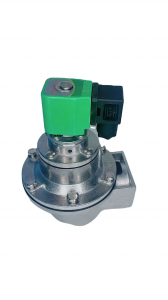
DMF-Z-40 Pulse Valve:Technical Parameters
Technical Parameters
- Working Pressure: The working pressure range of this pulse valve is 0.4 – 0.7Mpa. Within this pressure range, it can operate stably, providing sufficient and stable blowing power for the dust removal system. The appropriate working pressure ensures that the gas can blow the filter bags with enough speed and force, effectively removing the dust attached to the surface of the filter bags.
- Ambient Temperature: It can adapt to an ambient temperature range of -10℃ – 55℃. This enables it to work normally in a variety of industrial environments. Whether in the cold regions of northern China or the hot factories in southern China, the DMF-Z-40 pulse valve can operate reliably without being overly affected by temperature changes.
- Working Medium: It is only suitable for clean air as the working medium. Clean air can ensure the unobstructed gas circuit inside the pulse valve, preventing impurities from wearing or blocking key components such as the diaphragm and valve core, thus extending the service life of the pulse valve and ensuring its stable and reliable operation.
- Diaphragm Life: The diaphragm, as a key vulnerable part of the pulse valve, directly affects the maintenance cycle and use cost of the pulse valve. The diaphragm of the DMF-Z-40 pulse valve is carefully designed and selected. Under normal working conditions, it can withstand more than 1 million blows or be used continuously for 2 – 3 years. This long-life design significantly reduces the workload and frequency of equipment maintenance, improves production continuity and stability.
- Connection Thread: It adopts a ZG1 1/2″ connection thread. This standard thread connection method has good sealing performance and stability, making it convenient to connect with the metal pipe of the air storage tank and the blowpipe of the dust removal box, ensuring no leakage occurs during the flow of high-pressure gas.
- Dimensions and Weight: Its length is 140mm, width is 125mm, height is 170mm, and the overall weight is 1.6kg. The compact and reasonable size design allows it to adapt to various dust removal equipment with different spatial layouts. Its light weight also facilitates the operation of installation and maintenance personnel.
-
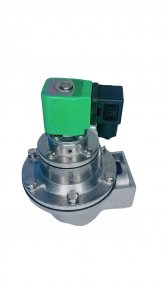
DMF-Z-40 Pulse Valve: A Reliable Assistant for Industrial Dust Removal
In many aspects of industrial production, dust treatment has always been a crucial issue. Whether it is to ensure the stable operation of production equipment or to meet the requirements of the working environment and environmental protection, an efficient dust removal system is essential. Among various dust removal equipment, the pulse valve, as one of the core components, directly affects the overall performance of the dust removal system. Today, we will have an in-depth understanding of a widely used pulse valve in the industrial field – the DMF-Z-40 pulse valve.
I. Product OverviewThe DMF-Z-40 pulse valve is a right-angle type valve, with a 90℃ angle between its inlet and outlet. This unique structural design gives it significant advantages in installation and connection. It is especially suitable for the connection between the air storage tank and the dust removal blowpipe, ensuring smooth gas flow and providing the required cleaning gas pulses for the dust removal system. As the “switch” for compressed air in the cleaning blowpipe system of pulse bag dust collectors, it plays a vital role in the entire dust removal process, directly determining the efficiency and effectiveness of filter bag cleaning by the dust collector.II. Working PrincipleThe working principle of the DMF-Z-40 pulse valve is based on electromagnetic control and gas circuit switching. When the pulse valve is not energized, high-pressure gas enters the lower air chamber from the inlet. At this time, the gas slowly enters the decompression chamber through the constant pressure pipeline between the upper and lower shells and the throttle hole in it. Since the valve core tightly blocks the pressure relief hole under the action of the spring, the gas cannot escape, keeping the pressure in the decompression chamber the same as that in the lower air chamber. Under the elastic force of the spring, the diaphragm seals the blowpipe tightly, preventing the gas from rushing out.When the pulse valve receives the electrical signal output by the pulse blowing control instrument, the valve core lifts upward against the spring resistance under the strong action of electromagnetic force, and the pressure relief hole is opened immediately. At this time, the gas quickly escapes from the pressure relief hole. Due to the current-limiting effect of the throttle hole in the constant pressure pipeline, the gas outflow speed from the pressure relief hole is much faster than the inflow speed of the gas from the constant pressure pipe of the decompression chamber, causing the pressure in the decompression chamber to drop rapidly and become lower than that in the lower air chamber. Under the pressure difference between the upper and lower air chambers, the gas in the lower air chamber generates enough thrust to lift the diaphragm, opening the blowpipe, and a powerful gas blowing flow rushes out instantly to clean the filter bags efficiently. When the electrical signal disappears, the electromagnetic force also disappears, and the valve core resets under the action of the spring, blocking the pressure relief hole. The pressure in the decompression chamber gradually recovers, and the diaphragm seals the blowpipe again, completing a full working cycle.